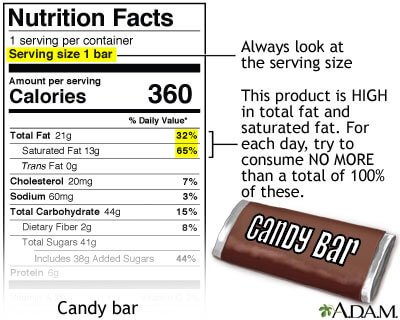Portion Distortion: How Should We Know How Much To Eat?
11 tricks to avoid overeating during the holidays and beyond.
Dec 12, 2019The holidays…So much food, so many good things to EAT! ‘Tis the season for throwing healthy eating out the window. But it doesn’t have to be that way. Enjoy some holiday goodies AND keep your health in check by paying attention to your portions. It’s so easy to eat whatever is in front of you without thinking about it, especially if your schedule is super crazy. Food portions have blown up in America, so it’s harder than ever to figure out how much to eat. Avoid holiday-eating burnout using some simple tricks.
 Have you ever thought of how many calories are in that burger and fries?
Have you ever thought of how many calories are in that burger and fries?
How did we get here?
In the past 25 years, the food we eat has grown super-sized without us even realizing it. Look at these popular foods 25 years ago verses now:
- Bagels: 25 years ago, they were 140 calories and 3 inches wide. Today, they’re 350 calories and 6 inches wide. You’d have to rake leaves for 50 minutes to make up the calorie difference.
 The size of bagels has at least doubled in recent decades.
The size of bagels has at least doubled in recent decades.
- Cheeseburgers: They were 333 calories, now they’re 590 calories. You’d have to lift weights for 1 ½ hours to make up the calorie difference.
 Our supersize-me culture has taken burgers to a whole new level in the past 25 years.
Our supersize-me culture has taken burgers to a whole new level in the past 25 years.
- Restaurant portions of spaghetti and meatballs: They were 500 calories verses 1,025 calories now (1 cup of pasta and 2 small meatballs, verses 2 cups of pasta and 3 large meatballs). You’d have to clean house for 2 hours and 35 minutes to make up the difference in calories.
 The Olive Garden recently debuted their giant chicken parmesan with giant meatball entree. Talk about super-size!
The Olive Garden recently debuted their giant chicken parmesan with giant meatball entree. Talk about super-size!
- French fries: 210 calories then to 610 calories now. You’d have to walk for an hour and 10 minutes to make up the calorie difference.
 A serving of fries has skyrocketed from 210 to 610 calories in the past 25 years.
A serving of fries has skyrocketed from 210 to 610 calories in the past 25 years.
Calories in vs. calories out
Do you know how much you’re eating? How do the following scenarios compare to your eating experiences?
You head to the mall with mom and beg her for a venti peppermint mocha frappuccino and she gives in. 580 calories down the straw!
 One of these babies has 580 calories.
One of these babies has 580 calories.
You stop at McDonald’s for lunch. You order off the dollar menu: 1 double cheeseburger, 1 small fry with ketchup, 1 small Coke. You just ate 860 calories and you picked the small fry and coke!
For dinner your family orders pizza and you eat 2 slices and 3 chicken wings, with a can of Coke. That’s 1600 calories!
 How many slices of pizza should you eat? Use the 20-minute rule!
How many slices of pizza should you eat? Use the 20-minute rule!
Do you see where I’m going with this?
You just ate 3,040 calories, and that doesn’t count breakfast or any snacks. If you’re outside playing sports or riding your bike for hours, you use some of this for energy. But if you spend hours playing video games or watching videos instead, many of your energy stores go unused. This is where we sometimes run into problems. We’re tipping our energy scale in the wrong direction – too much in, too little out.
 We eat more when we're watching screens, even if we're not really hungry.
We eat more when we're watching screens, even if we're not really hungry.
Simple ways to practice smart eating
Often, if we pay a little more attention to our eating habits, we’ll make a huge difference in our health. Trying these habits will help, especially during the holidays.
1. Use a smaller plate. This works—really! Studies show that people who use smaller plates tend to choose smaller portions.
 Use a small plate and eat only the treats you enjoy most.
Use a small plate and eat only the treats you enjoy most.
2. Read food labels. Find out the portion size for your food and try to stick to it.
 Look at food labels for serving size, fat, sugar, fiber and protein.
Look at food labels for serving size, fat, sugar, fiber and protein.
3. Taste it up — in small doses. It’s okay to eat the occasional dessert. Instead of scarfing it down, put more enjoyment into the experience. Eat only the treats you enjoy most. Take your time to eat a little of each chosen food and savor it.
4. Don’t skip meals. People who skip breakfast eat 200 more calories a day than people who don’t. They also have trouble staying at a healthy body weight. People who eat breakfast have healthier body weights.
 Eating a good-sized breakfast prevents overeating later in the day.
Eating a good-sized breakfast prevents overeating later in the day.
5. Get enough sleep. You can actually gain weight from lack of sleep!
6. Don’t fall into the mindless eating trap. Don’t eat something just because it’s put within reach. Ask yourself if you’re truly hungry first.
 Enjoy each bite of your food, and learn to recognize when your body is telling you that you're full.
Enjoy each bite of your food, and learn to recognize when your body is telling you that you're full.
7. Practice the 20-Minute Rule. Don’t choose dessert or seconds for 20 minutes after eating. It takes 20 minutes for our brains to tell our stomachs that we are full; however, most Americans eat their meals so quickly that the signal doesn’t kick-in in time.
8. Forgo liquid candy. We like to drink smoothies, coffee drinks, sodas, juices, and sports drinks. Try drinking water, seltzer or unsweetened tea instead. It makes a huge difference.
 Like bubbly sodas? Try flavored seltzers or unsweetened tea to get the carbonation without the sugar.
Like bubbly sodas? Try flavored seltzers or unsweetened tea to get the carbonation without the sugar.
9. Listen to your body. Most people don’t stop eating when they’re no longer hungry. Often, we’ll continue eating because of something going on in our environment. For example, we eat more if we are eating with other people. Learn to sense when your stomach has had its fill.
10. Don’t eat and watch. This includes internet, TV, social media and video games. We snack more when watching TV and are more likely to do so even when we are not physically hungry. Try to eat dinner with the television turned off. You’ll enjoy your food more because you’ll actually taste it!
11. Don’t sweat your failures. If you overindulge, forget about it and move on. Feeling guilty over food is never the answer. Instead, learn from the situation. How you can plan on making healthier choices next time?
Share With Kidzworld
Does any of this information surprise you? What are your thoughts about holiday eating? We’d love to hear from you!

































